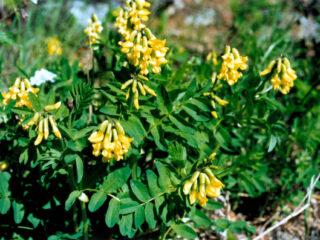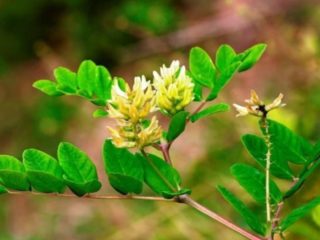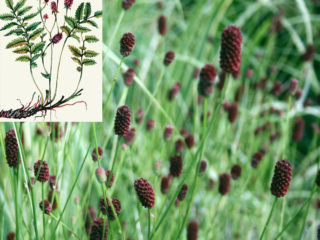Content
Danish Astragalus (Astragalus danicus) is the oldest plant on the planet, shrouded in many legends. In the old days it was used by alchemists when conducting experiments to find the "philosopher's stone". There are indeed grounds for this. Astragalus grows mainly in places of deposits of gold layers and accumulates a large amount of this precious metal throughout its life.
Description of Danish astragalus
Danish Astragalus (meadow) - is a representative of the legume family. It is a perennial herb. It stretches in height from 15 to 42 cm. It is characterized by ascending, sometimes erect stems, usually branched in the lower part. The length of the processes is from 8 to 30 cm.
Astragalus leaves are Danish sessile and consist of 6-13 pairs. They have an oblong shape, somewhat similar to an egg. On both sides there is a fine pile, mostly bulging.
The flowers are always purple. The corolla consists of 5 petals, the upper ones are larger in comparison with the lower ones. Peduncles are long, in contrast to the leaves, exceeding it by 1.5-2 times. Bracts are oblong, 2 to 4 mm long.
The calyx has a bell-shaped and tubular shape, with small hairs, mostly black, with a slight interspersed with white.
The fruits ripen in the form of beans. They are ovoid and have two leathery nests. Length from 7 to 12 mm. Thoroughly covered with white pile, which turns black as it ripens.
The root system of Danish Astragalus is pivotal.
The flowering period is from May to June.
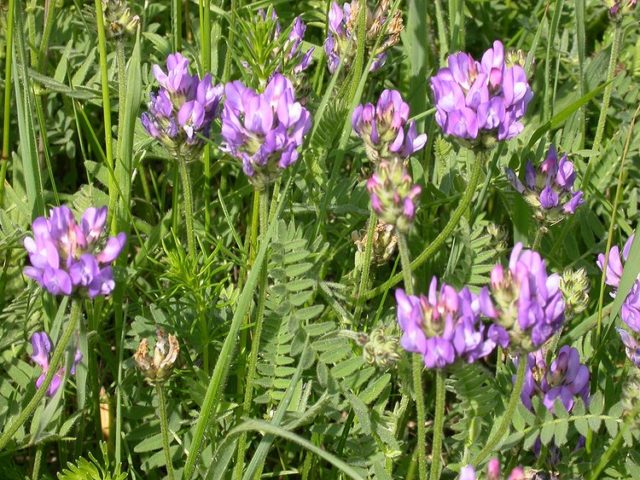
Astragalus Danish grows in the European part of Russia and in Siberia
Where grows
The plant grows in the steppe zone of Europe, Siberia and the European part of Russia. Prefers forest edges, steppe slopes, floodplain meadows and glades.
By the way, the name "Danish", astragalus received due to the fact that it was first described and found in Denmark. Previously, it was on this principle that plants got their name.
Chemical composition
Astragalus Danish contains:
- 0.13% coumarins;
- 220 mg of ascorbic acid;
- saponins;
- essential oils;
- organic compounds;
- amino acids;
- acids: succinic, citric, malic and oxalic;
- tannins;
- flavonoids;
- polysaccharides.
Of the vitamins that make up Danish Astragalus, C and E can be distinguished. The first stimulates the formation of collagen, stabilizes cholesterol levels and reduces the likelihood of blood clots. Vitamin E is very beneficial for the eyes, participates in the metabolic process and has an antioxidant effect on the body.
Organic compounds include asparagine, choline, gluconic acid, fragrances, betaine, and essential oils. Their entry into the body improves the functioning of the gastrointestinal tract.
The rich mineral composition makes the plant a real helper in the treatment of many diseases. Among the most useful minerals are sodium, silver, gold, manganese, iron, cobalt, aluminum and others.
Polysaccharides affect cancer cells, making it possible to increase the effectiveness of chemicals used in the treatment of oncology. They also help to cope with the manifestations of aging and relieve a person from chronic fatigue.Thanks to polysaccharides, you can regulate blood sugar levels and remove excess cholesterol.
Flavonoids, or plant polyphenols, reduce vascular permeability, reduce intraocular pressure, and regulate urine output. Help improve adrenal function and stabilize heart rhythms.
The tannins that make up Danish Astragalus help a person to strengthen the walls of blood vessels and remove harmful bacteria from the body. They have astringent properties and are directly involved in the synthesis of hemoglobin.
The essential oils of the plant have bactericidal, analgesic and antiseptic properties. They have a calming effect on the human nervous system, that is, they allow you to bring the emotional state back to normal.
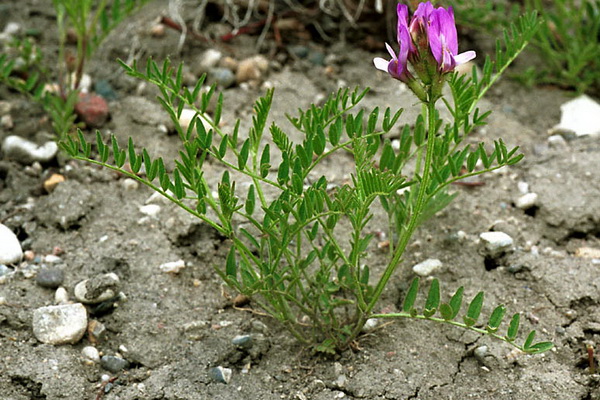
For medicinal purposes, Danish Astragalus herb is harvested during flowering
Medicinal properties of Danish Astragalus
The plant is an excellent honey plant. It is used as a forage crop in agriculture.
Danish astragalus is also widely used in herbal medicine. Its tonic properties allow it to be used in the treatment of:
- headaches;
- to relieve symptoms of hypertension;
- during colds and flu;
- pathologies of the gastrointestinal tract;
- to eliminate gynecological problems, even with prolapse of the uterus;
- arthritis;
- obesity;
- rheumatism;
- tuberculosis;
- with scrofula.
Astragalus allows you to eliminate the effects of weight lifting and remove signs of fatigue and exhaustion. It is widely used as a hemostatic and decongestant.
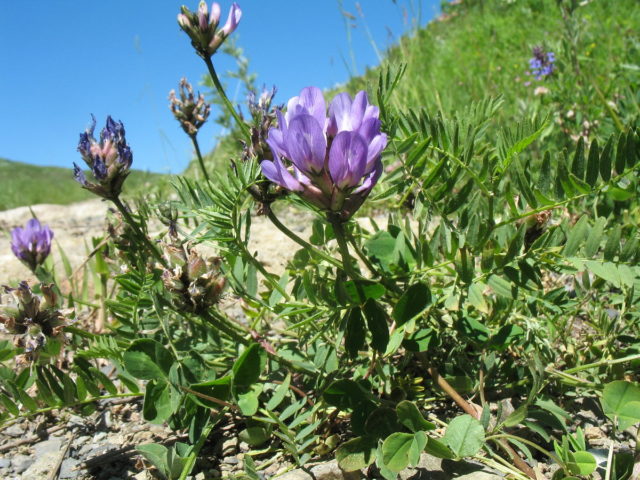
Infusion of the herb helps to get rid of fatigue
Cooking methods
There are several hundred varieties of Astragalus in the world. However, the membranous and Danish look has truly healing properties. But the first is very rare and is listed in the Red Book.
Danish astragalus is common and widely used in medicine. Tinctures, syrups and infusions are made from it.
Tincture
To eliminate the first manifestations of a cold or flu, prepare the following tincture:
- Danish astragalus inflorescences are laid out in a container, evenly distributed over the entire bottom.
- Pour in vodka so that the raw material is completely covered with liquid.
- Sent for 30 days in a dark room.
Periodically, the tincture must be shaken well. You can use the medicine even without diluting it with water. Drink 1 tbsp. l. several times throughout the day.
Infusion
Danish astragalus allows you to get rid of severe overwork, and even depression. For cooking, you will need the following components:
- 1 tbsp. l. Danish astragalus herbs;
- 1 tbsp. l. black long tea, always large-leaf;
- 1 tsp kuzmichevy grass;
- 500 ml of boiling water.
All components should be mixed and infused for about 30 minutes. The entire amount of the medicine is drunk for the whole day in 3-4 doses, in equal parts.
To get rid of puffiness, you need 1 tbsp. l. Danish astragalus herbs mixed with 500 ml of boiling water and close the container with the mixture, put in a water bath. Boil the infusion over low heat for 15 minutes. After bringing to room temperature, consume 1/3 cup all day, be sure to take a quarter of an hour before eating.
Danish Astragalus helps to get rid of migraines. For tincture you will need:
- 200 ml of boiling water;
- 1 tsp herbs.
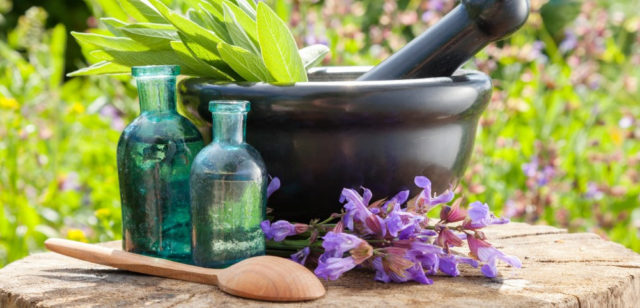
Danish astragalus is used to prepare medicines for headaches and depression
The mixture should be infused in a thermos for 60 minutes. The medicine must be filtered and used in the form of lotions on the forehead and inside. The last treatment option involves the use of 200 ml throughout the day in equal parts 3-4 times.
To prepare a tonic infusion you will need:
- 2 tbsp. l. Danish astragalus herbs;
- 300 ml of boiled but chilled water.
Fresh raw materials are mixed with water and infused for 4 hours. It is necessary to drink the medicine 50 ml daily, at least 4 times.
Medical applications and recipes
Official medicine recognizes the beneficial properties of Danish Astragalus, and even includes it in treatment. Root extract is most often recommended for use. It allows you to alleviate conditions in the presence of nephritis, regardless of the stage.
As an auxiliary course in the treatment, Danish astragalus extract is also used in a mixture with motherwort tincture. Mix the components in equal parts.
If angina pectoris is worried, then three components are required to prepare the medicine:
- hawthorn (tincture);
- valerian;
- astragalus extract.
All components should be mixed in equal proportions.
In the presence of pyelonephritis, urolithiasis and cystitis, doctors often recommend making a complex preparation from several extracts: horsetail, chamomile, astragalus and knotweed.
Due to its high silicon content, the plant extract is often included in the complex course of tuberculosis therapy. It is this substance that improves the delivery of useful components directly to the lungs.
Danish astragalus cannot be a basic element in therapy, but only acts as an additional means of combating pathology.
Danish Astragalus extract is used as a wound healing agent. To do this, 35-40 drops are diluted in 500 ml of water and lotions are made from the solution. This recipe is also suitable for douching in the presence of gynecological pathologies.
The solution can be used to rinse the mouth, throat, if there is stomatitis or angina is diagnosed. In these cases, the extract is diluted with water. 1 glass requires 20-25 drops.
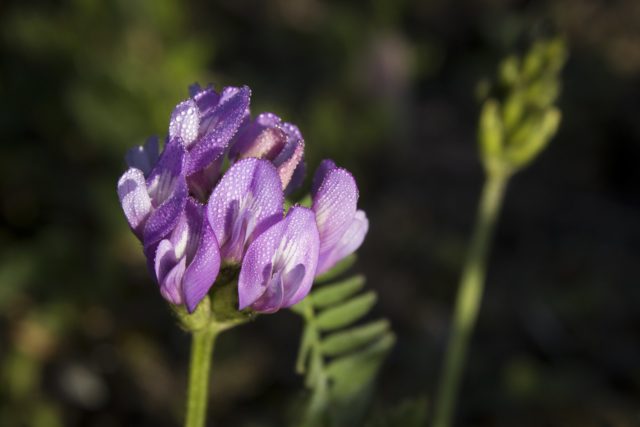
Danish Astragalus can be used as a wound healing agent
Contraindications
Despite the enormous medicinal properties of Danish Astragalus, in some cases, its use will have to be abandoned.
The plant is contraindicated:
- during pregnancy and lactation;
- children under 6 years old;
- in the presence of hypotension.
Do not increase the doses indicated in the recipes or use Astragalus for allergic reactions.
Despite the extremely rare cases of individual intolerance, it is still recommended to conduct a sensitivity test before starting treatment with Danish Astragalus. To do this, 5-7 fresh leaves of a plant or 1 tsp are steamed in a quarter of a glass of boiling water. dry raw materials, insist and drink. If no unpleasant symptoms and discomfort appear during the day, then you can safely start therapy.
Collection and procurement
Those who are poorly versed in medicinal herbs can familiarize themselves with how Danish astragalus looks from the photo. It is very difficult to confuse it with other plants. The roots and the aerial part of the plant are suitable for collection.
The collection of flowers, leaves and stems is carried out until the appearance of fruits, that is, at the stage of active budding. It is necessary to cut the plant at a height of at least 7 cm from the ground. The roots are harvested in the fall.
It is recommended to dry the plant in the attic. If this is not possible, then the room where the raw materials will be prepared must be well ventilated.
It is advisable to lay paper or natural fabric under the bottom, which will absorb moisture well. The grass layer should not be higher than 7 cm.
The shelf life of Danish Astragalus herb in dry form is 1 year. It no longer makes sense to store it, as it will lose all its beneficial properties and vitamins. This should be taken into account when collecting so as not to take more than will be used.
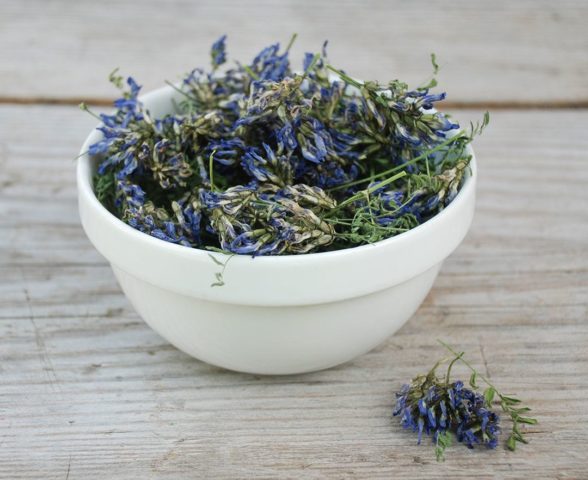
The plant contains coumarins and flavonoids
Conclusion
Danish Astragalus is a perennial plant that allows you to relieve fatigue and stress after a long and hard day at work. Official medicine includes this drug in the complex therapy of many diseases, from cystitis to tuberculosis.
Traditional medicine also makes extensive use of Danish astragalus. Many tinctures and infusions are prepared from it to eliminate the first symptoms of a cold before epilepsy treatment. The main thing is to always remember that increasing the dose can play a "cruel joke" with the patient, only worsening the condition, or cause the development of allergies.

